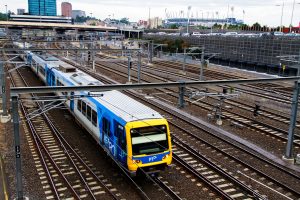The Australian state of Victoria released its budget this month and it wasn’t good news.
The state’s net debt is now forecasted to reach US$123.5 billion by 2027-28. Interest payments alone will cost the Victorian taxpayer US$16.5 million per day. Some of this debt may be offset by the state’s forecasted economic and population growth, yet this population growth also necessitates considerable investments in infrastructure. These investments may be deemed unaffordable by the state government.
Of Victoria’s current population of 6.8 million people, 5.3 million live in the Greater Melbourne metropolitan area. This metropolitan area is projected to grow to over 8 million people by 2050. This population growth will consolidate Melbourne’s current status as Australia’s largest city (depending on where you draw the boundaries) and maintain a trend of the city attracting substantial international and internal migration.
Since the turn of the century, the city has added 2 million people and has become a far more vibrant and interesting place because of this. Population growth is nothing to be frightened of, but it requires the government to think seriously about both the housing and the infrastructure it needs. This means having to make tough decisions about what its priorities are.
Over the past decade the Victorian government has been playing catch-up, following decades of neglect. A program known as the “Big Build” has invested in major new roads and enhancements to regional rail networks, as well as the removal of – so far – 77 level crossings that have prevented both train and cars from moving freely. Alongside this, a new rail tunnel underneath the city center is being built; it is expected to be operational early next year.
Yet all these projects have been responses to problems, rather than creative endeavors. It is the nature of governments that they tend to only act once a problem becomes untenable, rather than demonstrating forethought and ambition. The new Melbourne metro tunnel underneath the city center has a primary purpose to simply increase train frequency, rather than create a new way of getting around the city. This is positive, but not sufficient.
Despite the Big Build’s focus on solving problems that can no longer be tolerated, there is one creative and visionary project in the works – the Suburban Rail Loop. This new orbital rail network will not only address the limiting radial nature of Melbourne’s current train network, but also be the driver of new residential and employment hubs throughout the suburbs – decentralizing opportunity from the city center, while also connecting three of the city’s universities, which currently lack train connections.
Despite the necessity of the project, it has generated the most extraordinary wailing and gnashing of teeth from many of the city’s major institutions – its newspapers The Age and Herald-Sun, the public policy think tank the Grattan Institute, and the Victorian branch of the Liberal Party. There is a palpable fretting about the city’s future, and a deeply naïve perspective that believes that if the state doesn’t build the requisite infrastructure then the population won’t increase. These institutions would prefer the state build a drawbridge, rather than a train line.
Yet the state government’s financial problems mean that other essential projects are stalling. A new airport rail link has been pushed back four years, and a second metro tunnel underneath the city looks to have been completely abandoned, even though it would be the driver of the largest urban renewal project in Australia – the Fishermans Bend precinct. The government claims the precinct will be home to 80,000 people and 80,000 jobs; however, without the train line this is highly unlikely. This demonstrates a failure to understand what actually drives economic and social activity.
The Victorian government needs to embrace a specific ethos in order to take advantage of the extra 3 million people who will inhabit the city by 2050. It’s an understanding that rail creates culture, while cars inhibit it. Cities that have dense networks of rail lines tend to be the most interesting cities in the world.
Embracing 3 million more people is an enormous opportunity for Melbourne. However, Melbourne’s infrastructure needs and the state’s budget problems are clearly in grave tension. Given the city’s projected growth, the abandonment of rail projects cannot be the solution. Instead it means that the Victorian government needs to start making hard choices to reassess what its role is – to identify what it can and should do that is essential and creative, and dispense with aspects of the state that are inessential and inhibiting.

































